
I appreciate what Mikami is attempting here. However, in play I found these non-stop jumps in reality frustrating. The game is constantly leaping about like an overexcited puppy, and while this is endearing in small doses, after fifteen hours you just want the bloody thing to settle down and go to sleep. The Evil Within never establishes a flow. Its rhythm is one of incessant staccato notes and dotted beats. I hated this approach in last year’s Call of Duty: Ghosts, and I find it only mildly more palatable here.
That said, there’s another notable change from Resident Evil 4 which I really do like, and that’s a much stronger focus on survival horror. Unlike Resi 4’s Ganados, The Evil Within’s monstrous adversaries are fewer in number and generally harder to defeat. Meanwhile, ammo for your small arsenal of weapons is rare to say the least, with pickups often amounting to a single bullet or shotgun shell. You need to conserve ammunition wherever you can, sneaking up behind opponents to perform a stealth kill, and using melee weapons such as axes and torches.
The Evil Within lends you two additional tools to help you cope with the terrors you face. The first is the “agony crossbow”, which fires different types of bolts, such as explosive or incendiary bolts, that can be constructed by using parts collected from dismantled traps. In addition, Sebastian can burn knocked-down enemies using matches. This doesn’t make a lick of sense either in the pathetically small number of matches he can carry, or the way enemies light up like a bag of cotton balls soaked in gasoline when touched by a match flame. But, if timed right, an ignited enemy will also set fire to any nearby adversaries, which is a great way of saving ammo for bigger, tougher fights.
This is always a wise course of action, as Sebastian gets into some phenomenally nasty scrapes during his nightmarish adventure. Compared to Alien: Isolation, The Evil Within is a far more garish horror, a grisly carnival of splattered skulls, slimy bodies and smashed faces. It’s far too brash and silly to be truly terrifying, but it’s relentless and inventive. Many of the set-pieces are exceptionally well choreographed. The encounters with the safe-headed creature are particularly gruelling tests of the nervous system. It’s also a rare example of a game that improves as it progresses. The last three or four chapters are without a doubt the strongest, finally achieving some sense of cohesion as the story threads weave together and it broadly keeps to a single setting.
Unfortunately, the PC version of The Evil Within is hindered by technical issues and some bizarre design decisions. The recommended specs for The Evil Within are pretty obscene, and there are no minimum specs, which strongly suggests Tango have made little effort to optimise it for PC. Playing it on a Core i5 and GTX 660, a reasonable framerate is achievable with high settings and FXAA, but there’s no way we could guarantee such stability across the board. The game looks fantastic, particularly in its use of dynamic lighting and shadows. But the bane of id-tech 5, texture pop-in, is still very much a problem.
The biggest presentation issue is the use of wide black bars which obscure roughly a third of the screen. Several arguments have been made in defence of this. The first is that it is more “cinematic”. When used in reference to games, this argument should always be viewed with suspicion. It’s not a film and I’m not experiencing it on a screen the size of a swimming pool with a bag of overpriced popcorn in my lap and a child kicking the back of my chair. Thus, any cinematic approach can only be so successful.
The other claim is the limited view makes the game more claustrophobic, intensifying the horror. This is true to an extent, especially given the camera’s position (right behind Sebastian’s back) further obscures the screen. But equating good horror design with not being able to see what is happening properly is a poor defence. The Shining wouldn't be a scarier film if I watched it with a burlap sack on my head. Basically, it’s a load of nonsense and I don’t buy it for a second.
Frankly though, the technical hindrances aren't the main problem. I feel like The Evil Within is too busy looking backward to take any meaningful steps forward. It is a game intensely preoccupied with past glories. Even when it deliberately treads away from the previously worn path, it’s glancing over its shoulder and measuring the distance between. Its desire to remind you of those, while also wanting to show off how different it is being, ultimately results in a confused and uneven game.
That said, there’s another notable change from Resident Evil 4 which I really do like, and that’s a much stronger focus on survival horror. Unlike Resi 4’s Ganados, The Evil Within’s monstrous adversaries are fewer in number and generally harder to defeat. Meanwhile, ammo for your small arsenal of weapons is rare to say the least, with pickups often amounting to a single bullet or shotgun shell. You need to conserve ammunition wherever you can, sneaking up behind opponents to perform a stealth kill, and using melee weapons such as axes and torches.
The Evil Within lends you two additional tools to help you cope with the terrors you face. The first is the “agony crossbow”, which fires different types of bolts, such as explosive or incendiary bolts, that can be constructed by using parts collected from dismantled traps. In addition, Sebastian can burn knocked-down enemies using matches. This doesn’t make a lick of sense either in the pathetically small number of matches he can carry, or the way enemies light up like a bag of cotton balls soaked in gasoline when touched by a match flame. But, if timed right, an ignited enemy will also set fire to any nearby adversaries, which is a great way of saving ammo for bigger, tougher fights.
This is always a wise course of action, as Sebastian gets into some phenomenally nasty scrapes during his nightmarish adventure. Compared to Alien: Isolation, The Evil Within is a far more garish horror, a grisly carnival of splattered skulls, slimy bodies and smashed faces. It’s far too brash and silly to be truly terrifying, but it’s relentless and inventive. Many of the set-pieces are exceptionally well choreographed. The encounters with the safe-headed creature are particularly gruelling tests of the nervous system. It’s also a rare example of a game that improves as it progresses. The last three or four chapters are without a doubt the strongest, finally achieving some sense of cohesion as the story threads weave together and it broadly keeps to a single setting.
Unfortunately, the PC version of The Evil Within is hindered by technical issues and some bizarre design decisions. The recommended specs for The Evil Within are pretty obscene, and there are no minimum specs, which strongly suggests Tango have made little effort to optimise it for PC. Playing it on a Core i5 and GTX 660, a reasonable framerate is achievable with high settings and FXAA, but there’s no way we could guarantee such stability across the board. The game looks fantastic, particularly in its use of dynamic lighting and shadows. But the bane of id-tech 5, texture pop-in, is still very much a problem.
The biggest presentation issue is the use of wide black bars which obscure roughly a third of the screen. Several arguments have been made in defence of this. The first is that it is more “cinematic”. When used in reference to games, this argument should always be viewed with suspicion. It’s not a film and I’m not experiencing it on a screen the size of a swimming pool with a bag of overpriced popcorn in my lap and a child kicking the back of my chair. Thus, any cinematic approach can only be so successful.
The other claim is the limited view makes the game more claustrophobic, intensifying the horror. This is true to an extent, especially given the camera’s position (right behind Sebastian’s back) further obscures the screen. But equating good horror design with not being able to see what is happening properly is a poor defence. The Shining wouldn't be a scarier film if I watched it with a burlap sack on my head. Basically, it’s a load of nonsense and I don’t buy it for a second.
Frankly though, the technical hindrances aren't the main problem. I feel like The Evil Within is too busy looking backward to take any meaningful steps forward. It is a game intensely preoccupied with past glories. Even when it deliberately treads away from the previously worn path, it’s glancing over its shoulder and measuring the distance between. Its desire to remind you of those, while also wanting to show off how different it is being, ultimately results in a confused and uneven game.
-
Overall60 / 100


MSI MPG Velox 100R Chassis Review
October 14 2021 | 15:04

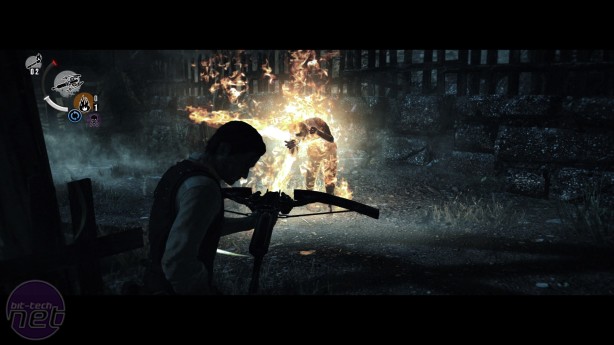
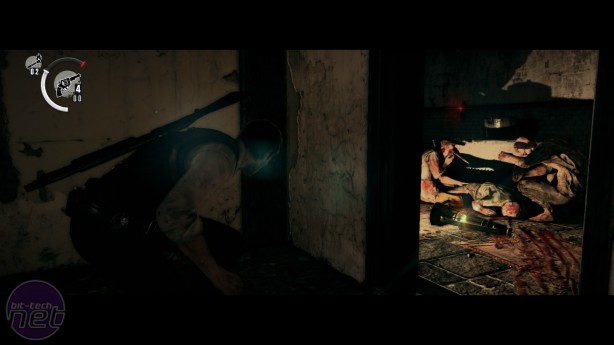
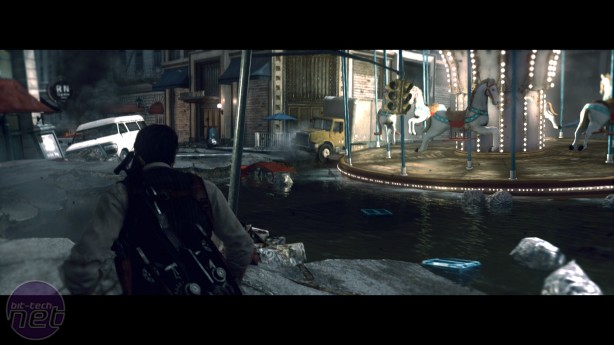
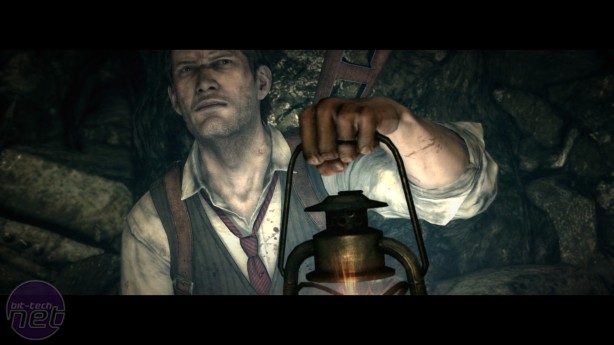
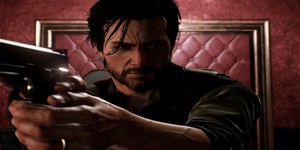







Want to comment? Please log in.